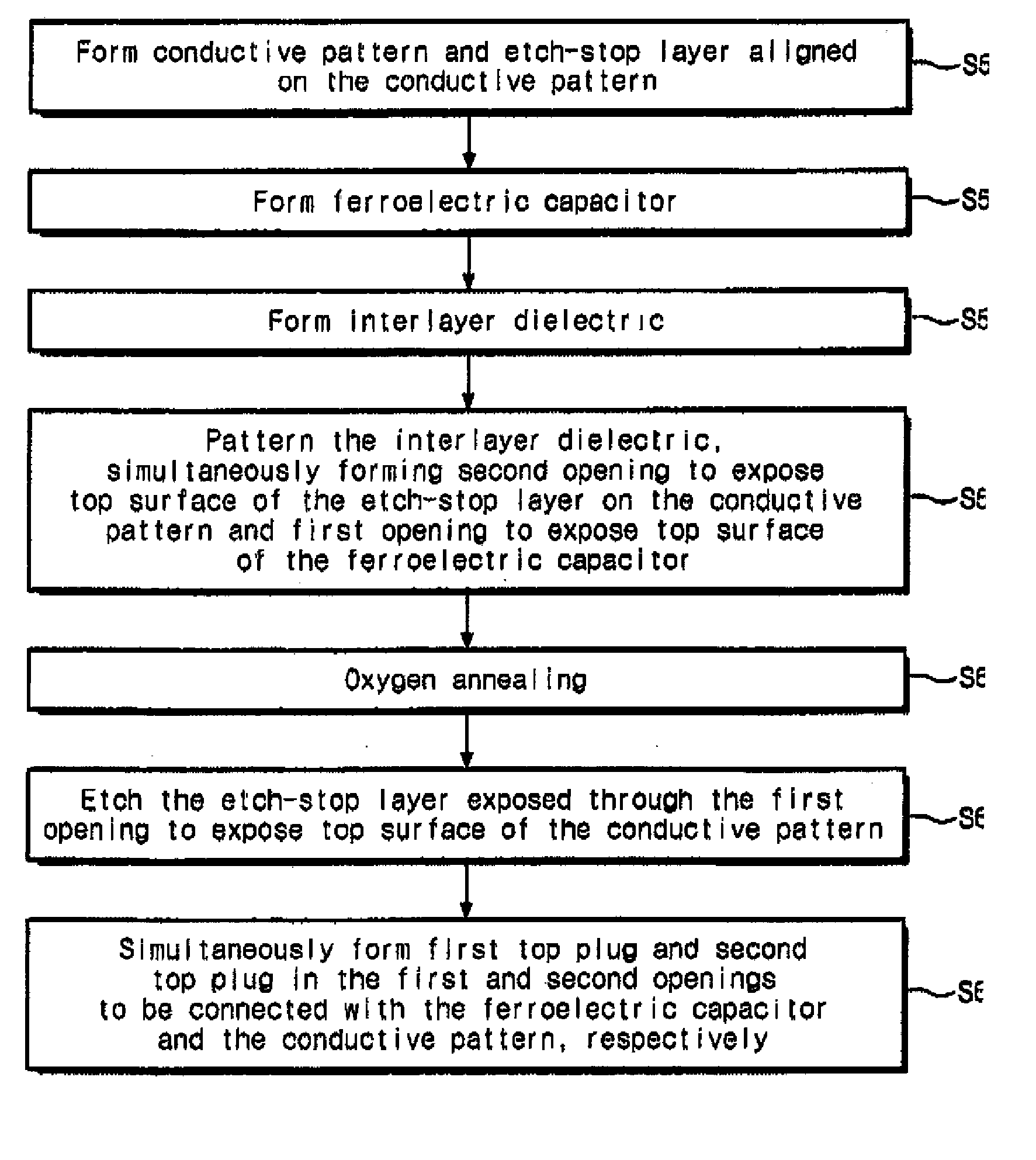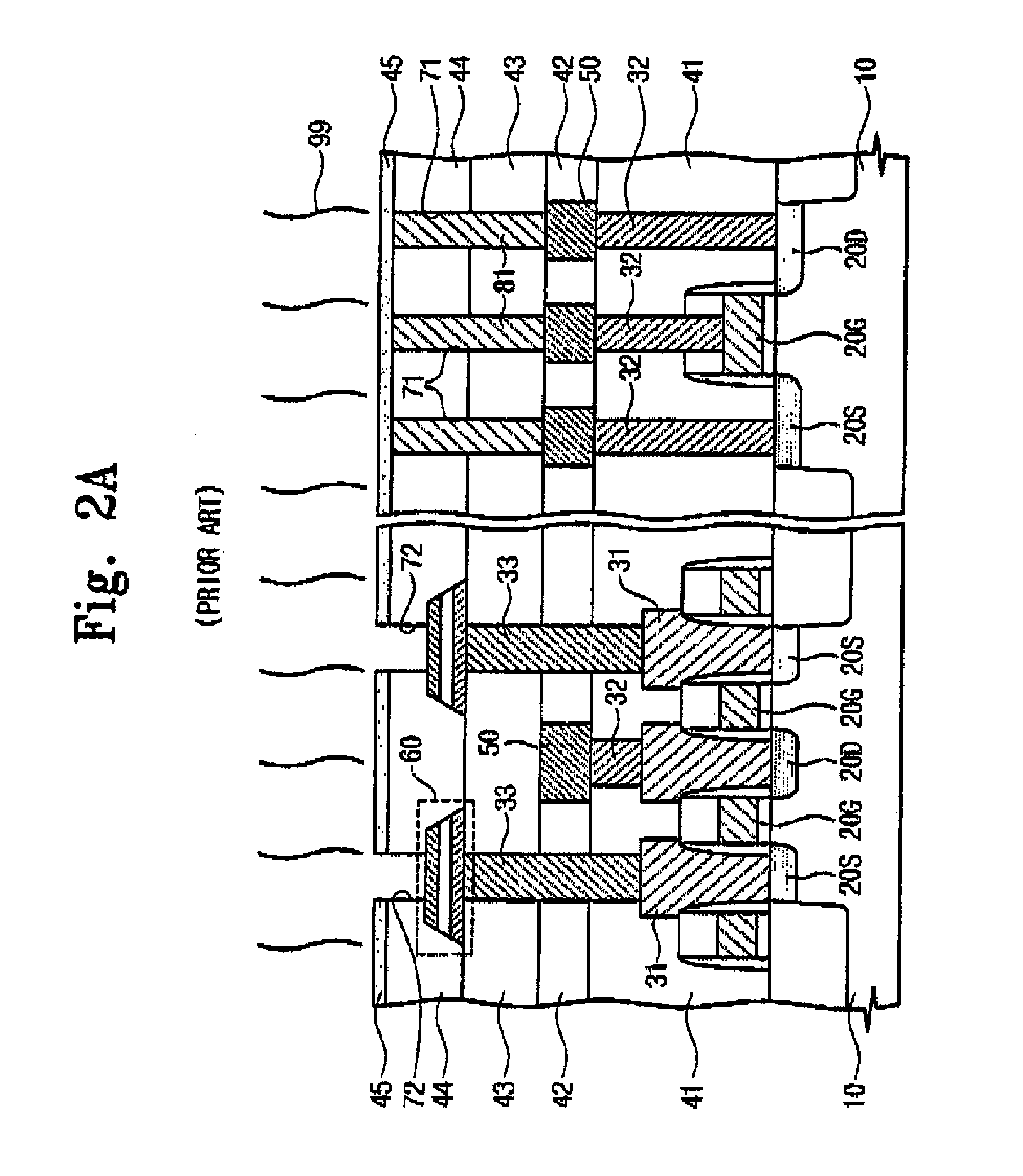Ferroelectric random access memory and methods of fabricating the same
a random access memory and ferroelectric technology, applied in the field of semiconductor devices, can solve the problems of oxidizing the conductive pattern of the interconnection line, increasing the cost of semiconductor fabrication, and performing more processing steps, and achieve the effect of enhancing chemical vapor deposition
- Summary
- Abstract
- Description
- Claims
- Application Information
AI Technical Summary
Benefits of technology
Problems solved by technology
Method used
Image
Examples
Embodiment Construction
[0028] The present invention will now be described more fully with reference to the accompanying drawings, in which illustrative embodiments of the invention are shown. The invention, however, may be embodied in various different forms, and should not be construed as being limited only to the illustrated embodiments. Rather, these embodiments are provided as examples, to convey the concept of the invention to one skilled in the art. Accordingly, known processes, elements, and techniques are not described with respect to some of the embodiments of the present invention. Throughout the drawings and written description, like reference numerals will be used to refer to like or similar elements. Also, in the drawings, the thicknesses of layers and regions are exaggerated for clarity. It is also understood that when a layer is referred to as being “on” another layer or substrate, it can be directly on the other layer or substrate, or intervening layers may also be present.
[0029] A method...
PUM
| Property | Measurement | Unit |
|---|---|---|
| ferroelectric | aaaaa | aaaaa |
| conductive | aaaaa | aaaaa |
| volatility | aaaaa | aaaaa |
Abstract
Description
Claims
Application Information
 Login to View More
Login to View More - R&D
- Intellectual Property
- Life Sciences
- Materials
- Tech Scout
- Unparalleled Data Quality
- Higher Quality Content
- 60% Fewer Hallucinations
Browse by: Latest US Patents, China's latest patents, Technical Efficacy Thesaurus, Application Domain, Technology Topic, Popular Technical Reports.
© 2025 PatSnap. All rights reserved.Legal|Privacy policy|Modern Slavery Act Transparency Statement|Sitemap|About US| Contact US: help@patsnap.com



